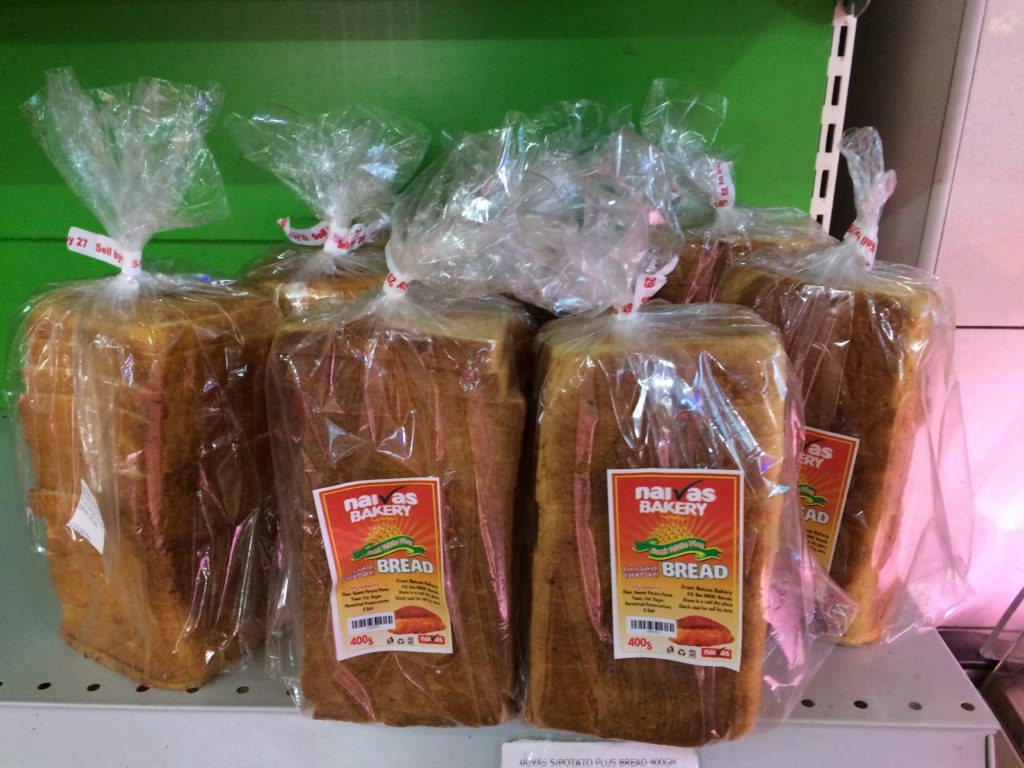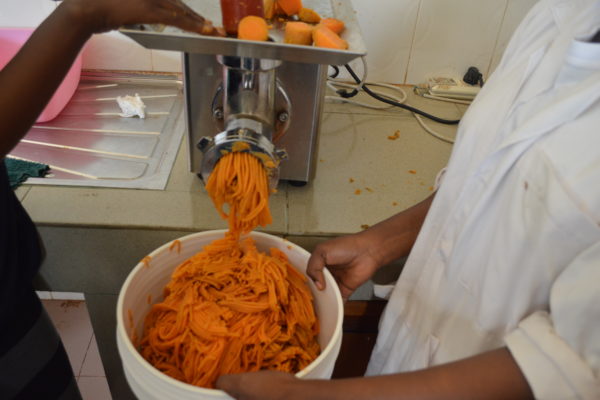Puree Production and Products for Sweet Potato
Summary
Processing of sweet potato tubers into puree and its utilization for baked and fried products allows to make the food staple available all year round, and offers an avenue for commercialization and local business development. Orange-fleshed sweet potato (OFSP) puree provides a cost-effective and healthy alternative to wheat flour as it can substitute 30-60% of the flour in a wide range of processed foods, whereby reducing production costs and increasing nutritional value.
About the Solution
Fresh tubers of sweet potato tubers perish rapidly, but when turned into puree the food is shelf-stable. Making puree from sweet potato tubers can be done with common small-industrial food processing equipment. Vacuum-packed storage technology with preservatives furthermore permits the puree to be stored at 23 degrees Celsius for up to four months, enabling widespread use of the processed food by bakeries and vendors.
Puree can be used for baking breads, buns, muffins, cup cakes, cookies and chapatti, or fried products like doughnuts and mandazi, as well as concentrated products such as baby food, porridge, soups and smoothies.
Puree of orange-fleshed sweet potato has a high pro-vitamin A content, and food products that are made with using OSFP puree are more nutritious than common wheat-based foods. Sensory testing of processed purees and their manufactured end-products has demonstrated a high public acceptance of appearance, aroma, texture and taste.
The process to make sweet potato tubers into puree is relatively simple to implement. It requires for quality roots from local farmers, cleaning the fresh tubers and steaming them, removing the peels, and mashing or pureeing the flesh.
Commercialization
Commercially available
Solution Images
Institutions

Accompanying Solutions
Orange-fleshed sweet potato, Community-based cutting production, Tent-style greenhouse production of vines and cuttings, Raised bed production and weed management, Specially blended fertilizers, Relay intercropping of legumes with sweet potato, Silage production from sweet potato vines



